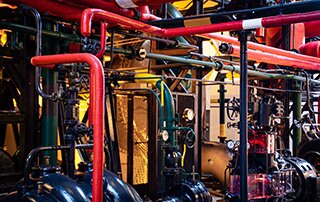The district heating (DH) cost modelling assessment addresses the long-term energy planning of DHs, considering the evolution of systems towards greater efficiency, lower distribution temperatures, greater shares of renewable energy and the incorporation of distributed renewables in the context of an increase of nearly zero energy efficient buildings (NZEBs).

Photo: Magda Ehlers (Pexels).
The cost modelling is one of the topics included in the report D4.6 (download report D4.6 here >>). The RELaTED project has addressed this issue in WP4 – Economic feasibility & business analysis. The report, D4.6, serves as a summary of the main findings for this WP as it relates to the profitable operation of the RELaTED DH networks.
Heat production costs
The assessment is performed based on the large DHs already in operation within RELaTED (Tartu & Belgrade). A cost model is constructed, where operation costs are defined for each heat production technology, allowing for hourly prioritization of heat production technologies based on their marginal costs. This cost model is used to develop scenario analysis where various potential
evolutions of the DH network are studied. Technology, production mix and fuel price evolutions are assessed.
In addition to the cost model and case studies, the cost structure of heat production plants were also assessed. The production technologies examined were (1) CHPs, (2) Boiler systems, (3) heat pumps, (4) and solar thermal systems.
In general, it can be said that centralized heat production sources meant for providing the base load and peak load for heat, like CHP and boiler systems, had higher capital and operating costs as they were the primary heat source for the DHN. Water to water heat pumps and solar thermal plants are more used to support the larger heat production sources when the demand for heat is beyond their capacity. Operating costs for these heat production options tend to be lower because the heat energy comes from renewable energy sources, like ground source water for heat pumps and solar irradiation for solar thermal (Read the full article in the document below).
